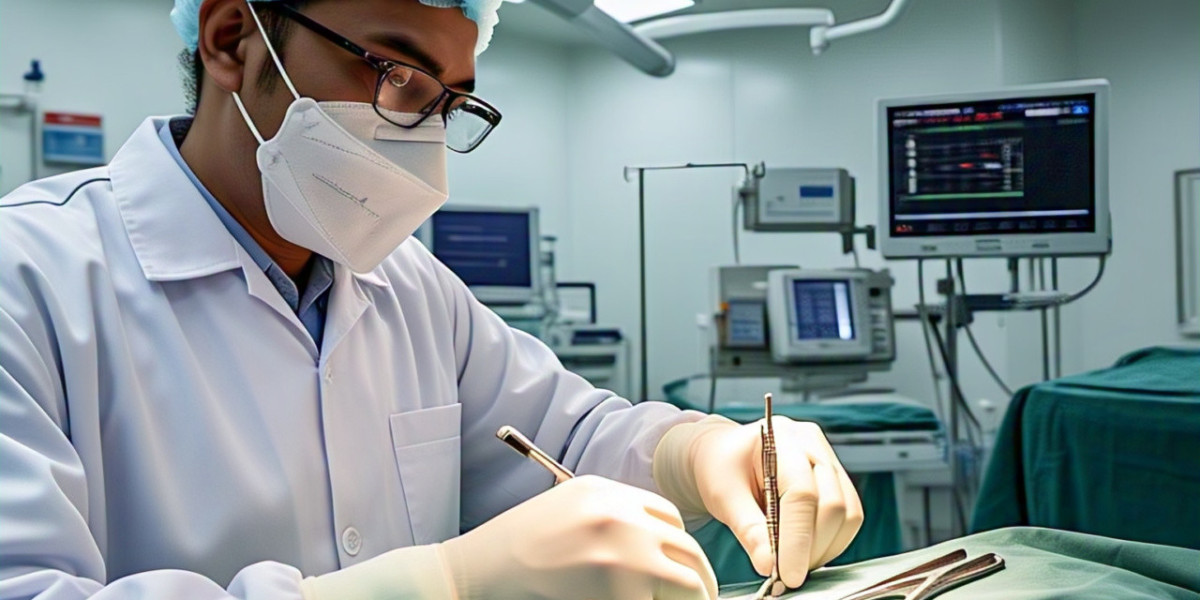Understanding the Nature of Emergency Surgery
Emergency surgeries are performed under time-sensitive, high-pressure situations where every second counts. Whether it's trauma, internal bleeding, or sudden organ failure, precision and speed are non-negotiable. In such critical moments, the performance of surgical tools can determine life or death. High-quality instruments ensure that surgeons can operate swiftly and accurately, minimizing risks and complications.
Precision Makes a Difference in Critical Moments
In emergencies, even the slightest slip or misjudgment can have catastrophic consequences. High-quality surgical tools are engineered for superior accuracy, allowing surgeons to make clean incisions and precise movements. The refined craftsmanship reduces the risk of tissue damage, blood loss, and post-operative complications. This level of precision is vital for complex procedures like brain surgery or cardiac intervention during emergencies.
Sterilization and Safety Compliance
Sterility is a major concern in surgical settings, especially during emergencies where infection risks are higher. Top-tier surgical instruments are made from high-grade stainless steel or titanium that withstands repeated sterilization without degrading. Their resistance to corrosion, rust, and wear ensures they remain safe for use across various patients and procedures, thus maintaining hospital hygiene standards.
Durability Enhances Long-Term Reliability
Emergency surgeries often push instruments to their limits. Low-quality tools can bend, break, or lose sharpness quickly, interrupting procedures and endangering patients. In contrast, premium-grade surgical tools maintain their integrity over time. This durability ensures that surgical teams are equipped with reliable instruments that won’t fail under stress, ultimately supporting better patient outcomes.
Time-Sensitive Efficiency in Operating Rooms
Delays in emergency procedures can lead to irreversible damage. High-quality instruments are designed for ergonomic use, allowing surgeons to handle them with ease and speed. Their intuitive design reduces fatigue and enhances focus, enabling medical teams to work more efficiently during urgent operations. This efficiency can significantly cut down on surgical time, which is crucial for patient survival.
Support for Minimally Invasive Techniques
With the rise of minimally invasive surgery in emergency care, high-quality instruments have become even more essential. These procedures require tools with exceptional precision and slender designs. High-end manufacturers provide instruments tailored for laparoscopy, endoscopy, and other minimally invasive approaches. This shift improves patient recovery rates, reduces scarring, and shortens hospital stays.
Ensuring Better Patient Outcomes
High-quality surgical instruments directly impact post-surgical recovery. Clean cuts and minimal trauma lead to faster healing and fewer infections. These factors reduce the need for additional surgeries or extended care, ultimately saving costs and enhancing patient experiences. Hospitals that invest in superior tools often report higher success rates and improved satisfaction.
Role of Quality Instruments in Ophthalmic Emergencies
Ophthalmic surgeries, such as repairing retinal detachment or treating acute glaucoma, demand microscopic precision. Using poorly manufactured tools in such sensitive areas can lead to permanent vision loss. That’s why many leading facilities source their specialized eye surgery tools from trusted ophthalmic surgical instruments manufacturers who prioritize precision and safety.
Training and Instrument Compatibility
For young surgeons in training, high-quality tools are essential for learning proper technique. These instruments provide consistent performance, allowing trainees to develop confidence and skill without the variability introduced by inferior equipment. Moreover, many top-tier instruments are compatible with modern surgical technologies, such as robotic systems and advanced imaging devices.
Improving Staff Workflow and Confidence
When medical staff are equipped with reliable instruments, they can work with greater assurance and less stress. Nurses and technicians can prepare the operating room more efficiently, knowing the instruments are in peak condition. This streamlined workflow translates into smoother surgeries, fewer interruptions, and increased patient throughput.
Cost-Effectiveness Over Time
While high-end surgical tools come with a higher upfront cost, they offer better long-term value. Their durability reduces the need for frequent replacements, and their performance minimizes patient complications—saving hospitals from lawsuits and re-operation expenses. Investing in top-quality tools is not just a medical necessity; it’s a financially sound decision.
Compliance with International Medical Standards
Surgical instruments must meet rigorous international quality standards. Certified manufacturers follow strict guidelines set by bodies like the FDA and ISO. Using these approved tools in emergency settings ensures compliance, legal safety, and professional credibility for hospitals and clinics. This compliance is especially important when dealing with global patients or in medical tourism settings.
How to Source Reliable Surgical Instruments
Finding trusted suppliers is key. Medical professionals must work with companies that have a track record of delivering excellence. Platforms like T-Surgical Instruments provide access to a wide range of surgical tools that meet stringent quality and performance standards. Partnering with such suppliers ensures consistent delivery of instruments that surgeons can rely on in emergencies.
Technological Advancements in Instrument Design
Modern surgical instruments integrate new technologies like laser-guided tips, anti-glare finishes, and ergonomic grips. These innovations support faster, more accurate surgeries and reflect the shift toward digital healthcare. Hospitals that stay updated with the latest advancements gain a competitive edge in emergency care.
Conclusion: Precision Tools for Life-Saving Decisions
In emergency surgery, there is no room for compromise. Every second, every movement, and every incision matters. High-quality surgical instruments empower medical teams to perform at their best, ensure patient safety, and improve outcomes. Investing in superior tools is not just about operational excellence—it’s about saving lives.
FAQs
1. Why are high-quality surgical instruments critical in emergencies?
They provide accuracy, reliability, and safety during time-sensitive procedures, reducing complications.
2. How do surgical tools impact patient recovery?
Premium tools enable cleaner cuts and minimize trauma, speeding up healing and reducing infection risk.
3. Are high-quality instruments cost-effective?
Yes, their durability and performance reduce long-term costs associated with replacements and re-operations.
4. What materials are best for surgical instruments?
Stainless steel and titanium are commonly used due to their strength, corrosion resistance, and sterilization tolerance.
5. Can low-quality tools affect surgical outcomes?
Absolutely. Poor-quality tools may break, dull, or cause tissue damage, increasing the risk of failure.
6. Where can hospitals find reliable surgical instruments?
Reputable platforms like T-Surgical Instruments offer certified tools trusted by professionals worldwide.






